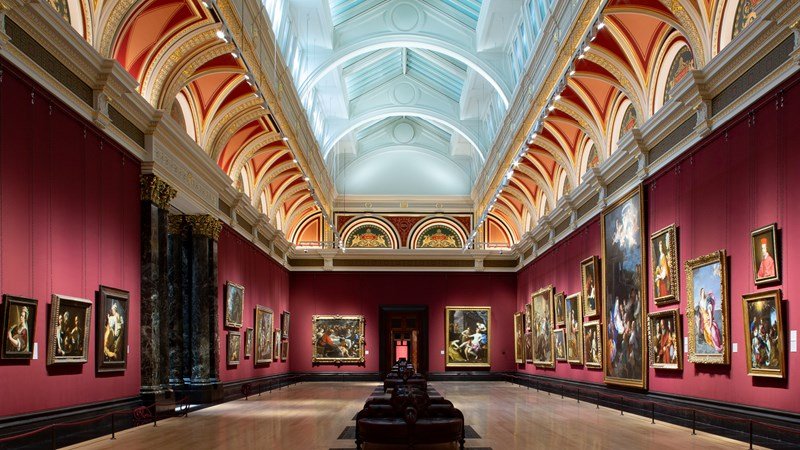prekforalldc.org – The National Gallery, located in the heart of London on Trafalgar Square, is a world-renowned art museum that houses an extensive collection of Western European paintings. With its iconic neoclassical façade and rich history, the gallery attracts millions of art lovers and tourists each year, offering a captivating journey through the evolution of art from the 13th to the early 20th century.
Historical Background
Founded in 1824, the National Gallery was established to make art accessible to the public and to serve as a national collection for the United Kingdom. Initially starting with just 38 paintings purchased from the banker and collector John Julius Angerstein, the gallery’s collection has grown significantly over the years, now boasting over 2,300 artworks.
Architectural Beauty
The gallery’s main building, designed by William Wilkins, opened in 1838 and is a masterpiece of neoclassical architecture. Over the years, the gallery has undergone several expansions and renovations, incorporating modern elements while preserving its historical charm. The Sainsbury Wing, completed in 1991, is a notable addition that provides a contemporary space for early Renaissance paintings.
Masterpieces and Collections
The National Gallery’s collection includes works by some of the most celebrated artists in history, such as Leonardo da Vinci, Vincent van Gogh, Rembrandt, and Claude Monet. Highlights include Van Gogh’s “Sunflowers,” Velázquez’s “Rokeby Venus,” and Turner’s “The Fighting Temeraire.” The gallery’s collection spans a wide range of artistic styles and periods, offering visitors an unparalleled insight into the development of Western art.
Educational and Cultural Contribution
Beyond its role as a repository of art, the National Gallery is committed to education and outreach. It offers a variety of programs, including lectures, workshops, guided tours, and family activities, designed to engage audiences of all ages and backgrounds. The gallery also collaborates with schools and universities, providing resources and opportunities for study and research in the arts.
Conclusion
The National Gallery in London is more than just a museum; it is a celebration of artistic achievement and a testament to the power of art to inspire and educate. With its magnificent collection and dedication to public engagement, the gallery stands as a cultural beacon in the heart of one of the world’s most vibrant cities, inviting visitors to explore the rich tapestry of human creativity.
